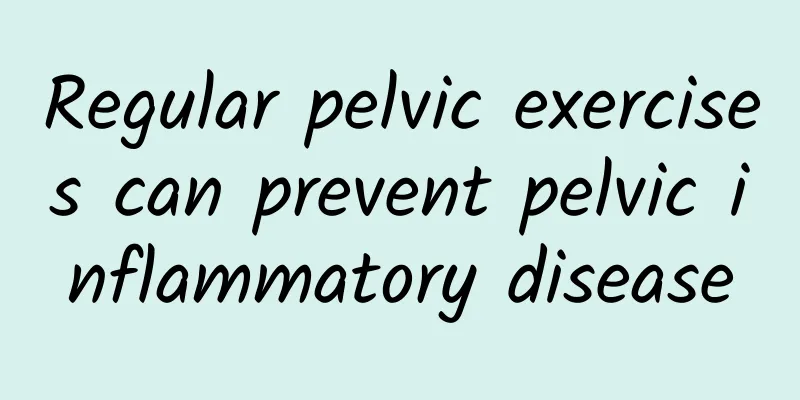Regular pelvic exercises can prevent pelvic inflammatory disease

|
To prevent pelvic inflammatory disease, you may want to try pelvic exercises, which are mainly divided into the following 8 exercises. The first step: left and right knee press Sit on the bed, bend your knees, place both hands on your knees, press your knees outwards with your left hand, and then repeat the above movements with your right hand after returning to the original position. Second step: Extend your arms and turn your body Sit on the bed, stretch your legs, spread your feet shoulder-width apart, place your hands flat on your hips, turn your upper body to the left, swing your left hand from back to front, touch your toes with your left hand, and move your eyes following your hand. After returning to the original position, repeat the above movements with your right hand. Step 3: Bend your knees and turn your waist Lie on your back, cross your hands and place them under your head, bend your left knee, place your left foot next to your right knee, turn your waist and left leg to the right, press your left knee down, and after returning to the original position, repeat the above movements with your right leg. The fourth type: supine leg kick Lie on your back, lift your left leg, bend your knee to 90 degrees, push your left foot up, make the angle between your legs 60 degrees, then slowly return to the original position and repeat with your right leg. Fifth Style: Extend your arms and clap your feet Lie on your back, raise your arms above your head, lift your left leg, pat the back of your left foot with your right hand, slowly return to the original position, and repeat the above movements with your right foot and left hand. Sixth form: side-lying leg kick Lie on your back, bend your left knee and raise it, place your left foot next to your right knee, turn your waist and left leg to the right, push your left leg diagonally forward, slowly return to the original position, and repeat the above action with your right leg. When pushing your legs, the angle between your legs should be 45 degrees. Style 7: Alternating knee bends Lie on your back, bring your legs together and lift them up, bend your knees slightly, straighten your left leg, bend your right leg and lift it up, alternate between left and right, rotating your legs like riding a bicycle, lift your legs off the bed, and move slowly. Eighth posture: Bend your knees and relax your legs Lie on your back with your legs straight. Bend your left knee 80 to 90 degrees, then slowly return to the original position. Bend your right knee and repeat the above steps. |
<<: How to prevent vulvar leukoplakia in summer
>>: How long does it take to get your period after an abortion?
Recommend
How to take care of women after menopause
Women need to adjust their healthy lifestyle afte...
The causes of uterine adnexitis are generally the following:
Uterine adnexitis is a common type of adnexitis. ...
What exactly is an ovarian cyst?
What are the symptoms of ovarian cysts? Ovarian c...
Is it difficult to treat mild cervical erosion? 5 effective treatments for mild cervical erosion
Does mild cervical erosion need to be treated? Ce...
What are the causes of irregular menstruation? Can obesity also cause irregular menstruation?
The incidence of irregular menstruation is very h...
【Video version】Fish oil not only lowers blood lipids but also fights depression! It also helps lower blood sugar
Fish oil is one of the most popular health foods ...
Young children dislike bitter melon and eggplant the most. The key period for correction is before 4 years old.
Do your children have picky eating habits? Accord...
Imaging Diagnosis of Congenital Absence of Vagina
Congenital absence of vagina is a serious hazard ...
There are 2 obvious symptoms of pelvic inflammatory disease
Pelvic inflammatory disease does not have two obv...
Xiao S lost 5.5 kg in a month and didn’t keep the menu to herself. Nutritionist: It’s better this way!
In order to make herself look better in photos, a...
Home remedies for acne during menstruation
Women's body resistance is relatively weak du...
Talk about the common symptoms of mild cervical erosion
In life, cervical erosion has already affected th...
The main culprit for women's menstrual irregularities
Irregular menstruation is a common phenomenon in ...
Symptoms of hyperplastic vulvar leukoplakia
What are the symptoms of hyperplastic vulvar leuk...
How to judge the effectiveness of medication for cervical erosion?
How to judge the effectiveness of medication for ...









